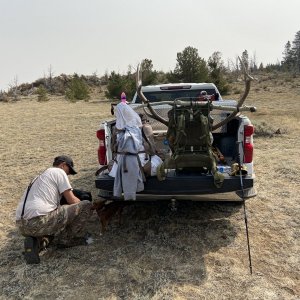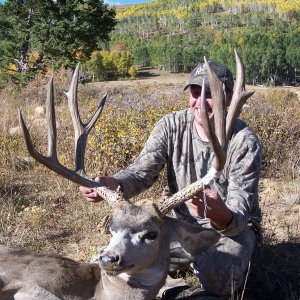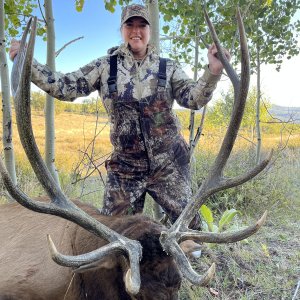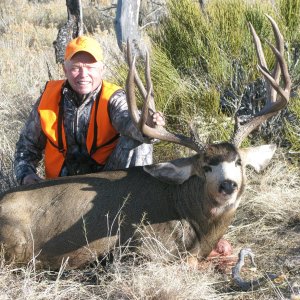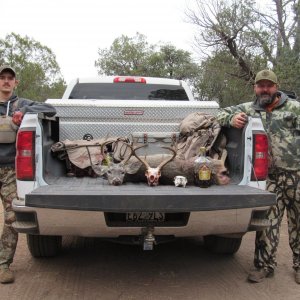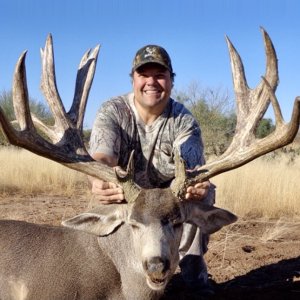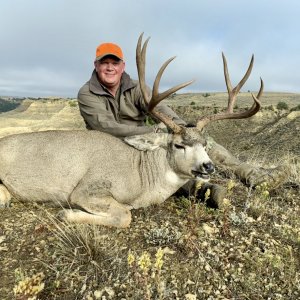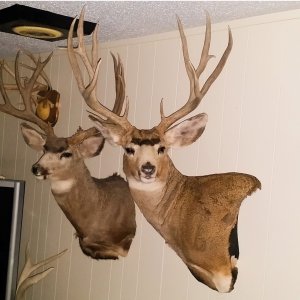nochawk
Moderator
- Messages
- 2,982
http://www.azgfd.gov/h_f/highlights/HuntingHighlightsDec2007.html#3
Game and Fish conducts historic 100th bighorn sheep translocation.
Program restores bighorn sheep to their historic habitats
By Doug Burt, public information officer,
Arizona Game and Fish Department
Arizona's bighorn sheep population received a boost in November when the Arizona Game and Fish Department, along with vital assistance from the Arizona Desert Bighorn Sheep Society, Yuma Proving Ground, and Bureau of Land Management, conducted its 100th capture-translocation.
The translocation program, celebrating its 50th year, aims to restore or enhance bighorn sheep populations in their historic habitats. The result of this logistically challenging and laborious process is to secure a valuable natural resource that benefits all Arizonans.
Thirteen desert bighorn sheep, 11 ewes (females) and two rams (males), were captured on the Yuma Proving Ground near Martinez Lake, north of Yuma, on Friday and were released in the Big Horn Mountains, about 90 miles west of Phoenix, on Saturday.
"These captures and releases are part of a long effort to bring these magnificent animals back from the brink of extirpation and restore them to their historic habitats," says Brian Wakeling, big game supervisor for the Arizona Game and Fish Department.
In the late 1800s, bighorn sheep were eliminated from a large portion of their range as a result of exposure to disease and unregulated hunting. In 1893, the Territorial Legislature passed a five-year moratorium banning all hunting of bighorn sheep, yet populations continued to decline. By the 1950s, bighorn populations in Arizona had dwindled significantly, and some feared they might be lost forever.
In 1953, Arizona established regulated hunting of bighorn rams as a way to raise awareness and generate funding for research and management efforts needed to fully recover desert bighorn sheep populations. Special interests groups, hunters, biologists and conservationists rallied together in this effort ? an effort that continues today.
The department conducted its first translocation in 1957. Since that first event, the department has moved close to 1,800 animals within Arizona. Today, mostly due to translocation efforts, Arizona?s bighorn sheep population is just over 6,000. Additionally, through the program, two species of bighorn sheep call Arizona home - the desert bighorn and Rocky Mountain bighorn.
The department's program has also supported other western states, sheep restoration efforts by transplanting 81 sheep to Colorado, 58 to New Mexico, 36 to Texas and 46 to Utah.
"The endeavor to restore the populations of these superb animals over the decades has been a classic cooperative effort between many partners and volunteers," says Wakeling.
To assure the health of the animals, retired veterinarian, Clancy Gansberg, volunteered his time, much like he has done for over 20 years. Personnel from Liberty Wildlife were also on hand to assist in the safe processing of animals. Papillon Grand Canyon Helicopters was contracted for the highly technical process of locating, capturing and transporting sheep from mountainous and rugged terrain.
Restoration efforts have involved enhanced land use planning, interagency cooperation, water developments, conservation hunt strategies, translocations, habitat studies and mitigation, and many hours of volunteer support.
Additional Arizona desert bighorn sheep information is available at the Department's Web site at http://www.azgfd.gov/h_f/game_bighorn.shtml
Game and Fish conducts historic 100th bighorn sheep translocation.
Program restores bighorn sheep to their historic habitats
By Doug Burt, public information officer,
Arizona Game and Fish Department
Arizona's bighorn sheep population received a boost in November when the Arizona Game and Fish Department, along with vital assistance from the Arizona Desert Bighorn Sheep Society, Yuma Proving Ground, and Bureau of Land Management, conducted its 100th capture-translocation.
The translocation program, celebrating its 50th year, aims to restore or enhance bighorn sheep populations in their historic habitats. The result of this logistically challenging and laborious process is to secure a valuable natural resource that benefits all Arizonans.
Thirteen desert bighorn sheep, 11 ewes (females) and two rams (males), were captured on the Yuma Proving Ground near Martinez Lake, north of Yuma, on Friday and were released in the Big Horn Mountains, about 90 miles west of Phoenix, on Saturday.
"These captures and releases are part of a long effort to bring these magnificent animals back from the brink of extirpation and restore them to their historic habitats," says Brian Wakeling, big game supervisor for the Arizona Game and Fish Department.
In the late 1800s, bighorn sheep were eliminated from a large portion of their range as a result of exposure to disease and unregulated hunting. In 1893, the Territorial Legislature passed a five-year moratorium banning all hunting of bighorn sheep, yet populations continued to decline. By the 1950s, bighorn populations in Arizona had dwindled significantly, and some feared they might be lost forever.
In 1953, Arizona established regulated hunting of bighorn rams as a way to raise awareness and generate funding for research and management efforts needed to fully recover desert bighorn sheep populations. Special interests groups, hunters, biologists and conservationists rallied together in this effort ? an effort that continues today.
The department conducted its first translocation in 1957. Since that first event, the department has moved close to 1,800 animals within Arizona. Today, mostly due to translocation efforts, Arizona?s bighorn sheep population is just over 6,000. Additionally, through the program, two species of bighorn sheep call Arizona home - the desert bighorn and Rocky Mountain bighorn.
The department's program has also supported other western states, sheep restoration efforts by transplanting 81 sheep to Colorado, 58 to New Mexico, 36 to Texas and 46 to Utah.
"The endeavor to restore the populations of these superb animals over the decades has been a classic cooperative effort between many partners and volunteers," says Wakeling.
To assure the health of the animals, retired veterinarian, Clancy Gansberg, volunteered his time, much like he has done for over 20 years. Personnel from Liberty Wildlife were also on hand to assist in the safe processing of animals. Papillon Grand Canyon Helicopters was contracted for the highly technical process of locating, capturing and transporting sheep from mountainous and rugged terrain.
Restoration efforts have involved enhanced land use planning, interagency cooperation, water developments, conservation hunt strategies, translocations, habitat studies and mitigation, and many hours of volunteer support.
Additional Arizona desert bighorn sheep information is available at the Department's Web site at http://www.azgfd.gov/h_f/game_bighorn.shtml

